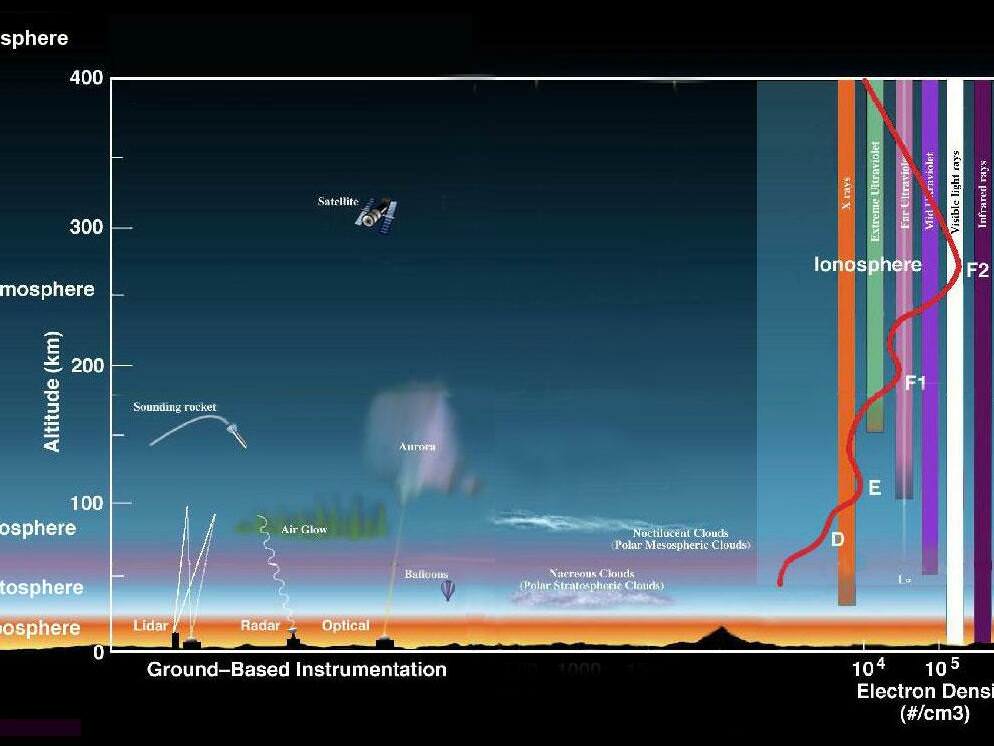Space does not have definitive and well-defined boundaries. It is the expansive realm that extends beyond the atmospheres of celestial bodies. Atmospheres are primarily composed of gases that gradually dissipate as they move further away from the surface of a celestial body. The celestial objects themselves are in constant motion. However, scientists have been able to estimate the approximate limits of outer space, providing astronomy enthusiasts with a convenient framework for exploring the universe.

Exploring the Depths of Outer Space
The official demarcation between Earth’s airspace and outer space is set at a distance of 100 kilometers from the planet’s surface. Once an aircraft surpasses this altitude, it can be rightfully classified as a spacecraft. The world’s first spaceflight reached a height of 302 kilometers, achieved by Yuri Gagarin aboard the Vostok-1 spacecraft on April 12, 1961.
The International Space Station orbits at an average altitude of 400 kilometers.
The thermosphere, the uppermost layer of the atmosphere, reaches a maximum height of 690 kilometers.
The geostationary orbit, where satellites rotate at the same speed as the Earth’s axis, sits at an altitude of 35,786 kilometers.
384,400 kilometers is the measurement between the Earth and its solitary natural satellite, the Moon.
401,000 kilometers is the achievement for the furthest distance traveled by manned spacecraft. This remarkable record was established on April 14, 1970 by brave American astronauts aboard Apollo 13.
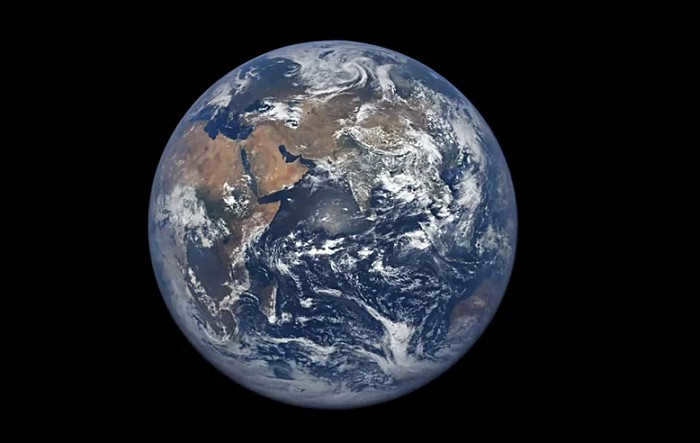
Human space flight has achieved a record range of 401,000 kilometers from the Earth’s surface.
Automatic spacecrafts have conquered interplanetary spaces
At an altitude of 21 million kilometers, the Earth’s gravitational force no longer influences other space objects.
Venus, the nearest planet, is located at a distance of 41 million 400 thousand kilometers from Earth.
Mars is located at a distance of 78 million 300 thousand kilometers from Earth.
Mercury is located at a distance of 92 million kilometers from Earth.
The distance from Earth to the Sun is 149 million 600 thousand kilometers. The nearest gas giant, Jupiter, is located at a distance of 628 million 400 thousand kilometers from Earth.
The distance from Earth to Saturn is 1 billion 277 million kilometers.
The distance from Earth to Uranus is 2 billion 721 million kilometers.
The distance from Earth to Neptune, the most distant planet in the solar system, is 4 billion 347 million kilometers.
The distance of Voyager 1, the farthest automatic spacecraft, is 21 billion 170 million kilometers.
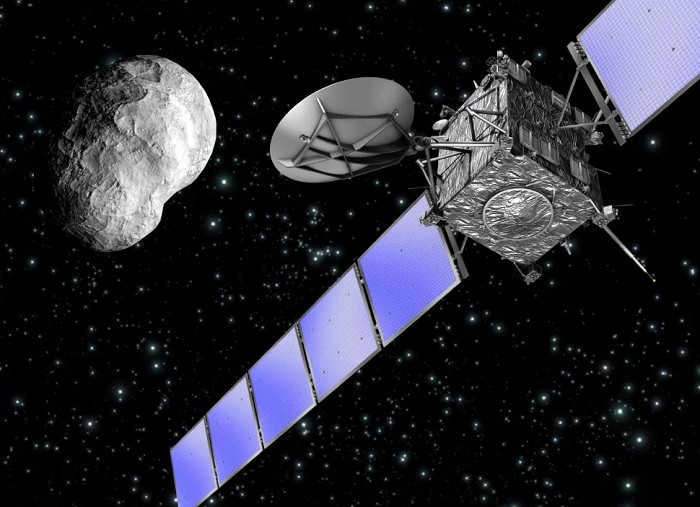
Space areas that will be explored by humanity in the future
The boundary of the solar system, which marks the beginning of interstellar space, spans a staggering 35 billion kilometers.
When it comes to measuring interstellar distances, 1 light-year is equivalent to a mind-boggling 9 trillion 500 billion kilometers.
Our nearest star (excluding the Sun), Proxima Centauri, is located at a distance of approximately 4 light years and 3 months from us.
The Galactic center of the Milky Way lies an astounding 28 thousand light years away from the Sun.
If we were to embark on a journey to the nearest large galaxy, the Andromeda Nebula, we would need to cover a staggering distance of 2 million 500 thousand light years.

Although it may appear as a brief stroll to reach the Andromeda Nebula, in reality, we are separated by countless light years.
The stratosphere constitutes a segment of the atmosphere that, at a specific altitude, mirrors the air density found on the surface of Mars. Furthermore, it encompasses the renowned ozone layer, which remains a constant concern for environmentalists.
What is the Stratosphere?
Scientifically speaking, the stratosphere refers to an atmospheric layer that sits between the troposphere and the mesosphere. In terms of historical significance, its discovery is relatively recent, dating back to 1893, when advancements in aeronautics technology allowed for the creation of balloon probes to study atmospheric conditions at high altitudes.
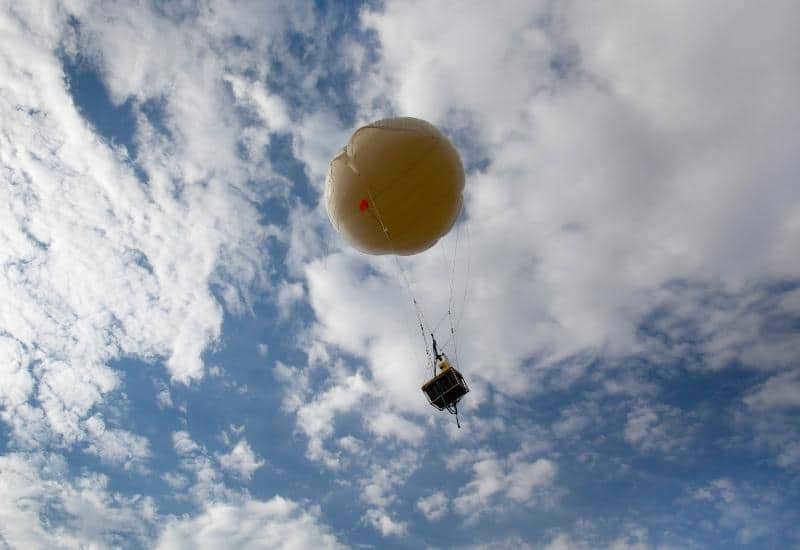
Leon Philippe Teyseren de Boer, a Frenchman, made an interesting observation after conducting 540 balloon launches. He noticed that at a specific altitude, the temperature of the air stops decreasing and instead starts to gradually increase. On April 28, 1902, Teyseren de Boer shared his discovery of the isothermal boundary in the atmosphere with the Paris Academy. This groundbreaking finding led to the introduction of the term “stratosphere” in the scientific community and provided the first explanation of its characteristics.
Currently, it is understood that the stratosphere’s height varies: its lower boundary sits above the tropopause, approximately 7-16 km above the Earth’s surface, while its upper boundary ends at the stratopause, around 50-55 km above sea level. However, these limits are not fixed.
The altitude of the lower portion constantly fluctuates depending on the season and location, ranging from the poles to the equator. For instance, during summer in tropical and subtropical regions, it reaches higher altitudes, around 10-16 km. Conversely, in winter and near the poles, it descends to 6-10 km.
Features of the stratosphere
In contrast to the troposphere below, the stratosphere exhibits a more uniform composition of air, yet with significantly lower gas density. This is just one of the distinctive characteristics found within this atmospheric layer.

The mesosphere is situated above the stratosphere, and as the altitude increases, the air in this layer gradually loses heat and becomes colder.
Flight in the Stratosphere
In reality, commercial aviation takes place exclusively within the troposphere. Only a small number of aircraft venture into higher altitudes. These include meteorological probes, similar to those used in the 19th century. Essentially, they are robust balloons equipped with advanced electronic systems for observing the atmosphere and transmitting data to scientists for research and weather monitoring purposes.
In the aviation community, the stratosphere is commonly known as “nearly outer space” due to its unique properties. The stratosphere is characterized by frigid temperatures, sparse air, and intense solar radiation, making it inhospitable for human life.
However, this does not imply that humans have never ventured into this atmospheric layer:

- On May 27, 1931, Paul Kipfer and Auguste Picard became the first individuals to ascend to a height of 15875 m. A year later, Auguste Picard was able to surpass the 16 km mark.
- In 1933-1935, a competition between the USSR and the USA emerged. In 1933, Soviet individuals Prokofiev, Birnbaum, and Godunov successfully climbed to a height of 19 kilometers. The following year, another team reached a height of 22 km but unfortunately crashed during the descent. As part of the American Explorer project from 1933-1935, Albert Stevens and Orville Andersen were able to replicate the ascent to an altitude of 22 km.
- From 1959-1962, the USA launched the Excelsior project to study new aircraft and parachute systems. Out of the 6 individuals involved, 3 unfortunately passed away. However, in 1960, the altitude record was updated to 26 km. It is worth noting that during the same period, Yuri Gagarin embarked on his journey into space in 1961.
- The StratoLab science program was initiated in 1961, where one of the stratospheric aircraft managed to ascend to an impressive altitude of nearly 35 km. During this mission, scientists Malcolm Ross and Victor Preter utilized space suits as a means of safeguarding themselves.
Currently, individuals are taking to the skies in the stratosphere primarily through the use of supersonic jet cockpits. However, there exist individuals who persist in pushing the boundaries of human endurance. When it comes to determining the optimal altitude in the stratosphere for parachuting from an aircraft, the title of champion goes to the vice president of Google. Back in 2014, Alan Eustace, a 57-year-old corporate employee, achieved a triumphant leap from an astonishing height of 41,419 meters.

The ozone layer, which makes up only 0.00003% of the atmosphere’s mass, is surprisingly small. If we were to condense it at normal pressure, it would only be 4 mm thick. While this substance is toxic and unsuitable for breathing, it serves as a crucial barrier that safeguards all life on Earth. By reflecting ultraviolet rays, which have the potential to cause genetic mutations by damaging organic cells, ozone prevents the existence of life beyond its protective shield.
However, since the 1970s, environmentalists have grown increasingly alarmed by the depletion of the ozone layer and the resulting threats to humanity. There are three primary factors contributing to the weakening of our planet’s defensive shield.
During the 1930s, a group of scientists made a breakthrough in creating new chemical compounds consisting of chlorine, fluorine, and carbon. These compounds were given the name freons or CFCs (CFCs in English-language sources).
These compounds quickly gained popularity and were widely used in various industries:

- Freon is used as a substitute for highly toxic ammonia and sulfur oxide in refrigerators and air conditioners;
- It is also used as the base for gas cans;
- Additionally, it serves as the base for perfume and medical aerosols;
- Furthermore, it acts as a foaming agent in the production of polyurethane.
Nevertheless, it was discovered that when Freon enters the stratosphere, it decomposes due to ultraviolet light and liberates chlorine atoms. Consequently, these chlorine atoms engage in a highly reactive process with the Earth’s protective ozone layer, disrupting oxygen molecule bonds. Remarkably, just one chlorine atom can annihilate as many as 100,000 ozone molecules. As a result, this revelation gradually led to the decline in Freon usage in various industries and its substitution with chlorofluorocarbon compounds, which undergo destruction within the troposphere.
Nitrogen oxides
Compounds of N2O, when they enter the ozone layer, remove excess oxygen molecules and transform into 2 NO molecules. This process gradually leads to a depletion of the gas layer.
Traditionally, nitrogen oxides could only reach the stratosphere through volcanic emissions, resulting in minimal impact. However, currently, harmful chemical compounds affecting the ozone layer are being transported in large quantities through the atmosphere due to supersonic fighter jets and the widespread use of nitrogen fertilizers.
While aircraft emissions in the stratosphere are relatively insignificant, nitrogen is utilized worldwide for crop production. In 2019, the top ten countries collectively produced 72.1 million tons of nitrogen fertilizer.
In the 1980s, researchers observed a significant decrease in the thickness of the protective stratospheric layer at the South Pole, leading to the formation of what is now known as the “hole.” A similar phenomenon, although on a smaller scale, was also observed at the North Pole. This concerning process serves as an alarming reminder of the detrimental effects of human activity on our planet. Despite the severity of the issue, it went largely unnoticed, as these regions are sparsely populated and receive little attention from the general public.
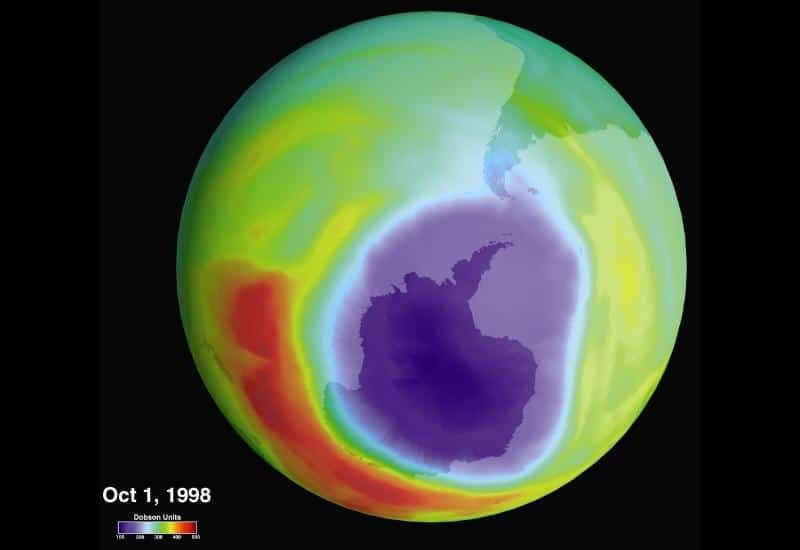
Nevertheless, in 2018, scientist William Ball released a research paper in the journal Atmospheric Chemistry and Physics presenting fresh evidence. His findings demonstrated that the “hole” above the South Pole is constricting. However, as a compensatory mechanism, the ozone layer over temperate latitudes has started to diminish. Consequently, nearly all developed nations are directly at risk.
This does not imply that an irreparable event will occur in the immediate future. Nevertheless, unless there is a shift in attitudes towards atmospheric emissions and the implementation of new safeguard measures for the stratosphere, humanity will confront the challenge of safeguarding humans, plants, and animals from ultraviolet radiation in the coming years.
The Earth is surrounded by a layer of gas that consists mostly of nitrogen, but also has an unusually high amount of oxygen and small quantities of various other molecules.

The visible blue layer surrounding Earth when viewed from space aboard the ISS at an altitude of 335 kilometers (208 miles) consists of scattered blue light emitted by gases in the atmosphere. [1]
The composition of Earth’s atmosphere, excluding water vapor, is represented in the bottom chart. Trace gases, which make up approximately 0.04333391% of the atmosphere (0.04402961% at April 2019 concentrations [2] [3]), are shown in the chart. The data mainly represents figures from 2000, with CO
2 and methane values from 2019, and does not originate from a single source. [4]
According to the volume, nitrogen makes up 78.09% of dry air, while oxygen accounts for 20.95%, argon – 0.93%, carbon dioxide – 0.04%, and there are also trace amounts of other gases. [8] Additionally, air contains varying levels of water vapor, with an average of about 1% at sea level and 0.4% above the entire atmosphere. The composition, temperature, and atmospheric pressure of air change as altitude increases, and it is the troposphere of Earth and the artificial atmosphere that provide suitable conditions for photosynthesis in terrestrial plants and respiration in terrestrial animals.
The composition of Earth’s atmosphere has undergone significant transformations since its initial formation as a predominantly hydrogen atmosphere. These changes have occurred multiple times throughout history, with one notable event being the Great Oxidizing Event that took place 2.4 billion years ago. During this event, the oxygen content in the atmosphere experienced a dramatic increase, going from nearly zero to levels that resemble the ones we have today.
In addition to natural occurrences, human activities have also played a crucial role in altering the composition of the atmosphere. Air pollution, particularly since the advent of industrialization, has had a profound impact on the environment. This has led to rapid environmental changes, such as ozone depletion and global warming.
The atmosphere has a mass of approximately 5.15 × 10 18 kg,[9], with around three-quarters of it located within 11 km (6.8 mi; 36,000 ft) of the Earth’s surface. As altitude increases, the atmosphere gradually becomes thinner, with no clear distinction between the atmosphere and outer space. Scientists often use the Karman Line, which is situated 100 km (62 miles) above the Earth’s surface and represents 1.57% of the planet’s radius, as the boundary between the atmosphere and outer space. When spacecraft re-enter the atmosphere at an altitude of about 120 km (75 miles), atmospheric effects become noticeable. The atmosphere can be divided into different layers based on factors such as temperature and composition.
The field of study that focuses on the Earth’s atmosphere and its processes is known as atmospheric science or aerology. It encompasses various subfields including climatology and atmospheric physics. Some of the early pioneers in this field include Leon Teysseren de Bort and Richard Assmann. [10] The study of the Earth’s historical atmosphere is referred to as paleoclimatology.
- 1 Essay
- 2 Stratification
- 2.1 Exosphere
- 2.2 Thermosphere
- 2.3 Mesosphere
- 2.4 Stratosphere
- 2.5 Troposphere
- 2.6 Other layers
- 3.1 Pressure and thickness
- 3.2 Temperature and speed of sound
- 3.3 Density and mass
- 4.1 Scattering
- 4.2 Absorption
- 4.3 Emission
- 4.4 Refractive index
- 6.1 Earliest atmosphere
- 6.3 The Third Layer of the Atmosphere
- 6.4 The Problem of Air Pollution
Article
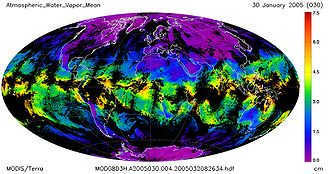
(A) The mole fraction and volume fraction are equal for an ideal gas only, and you can also refer to the volume in thermodynamics.
(B) ppmv: parts per million by volume.
(C) The concentration of CO
2 has been increasing in recent years.
(D) Water vapor makes up about 0.25% of the total atmosphere by mass.
(E) The amount of water vapor varies significantly from one location to another [11].
The average molecular weight of dry air, which can be used to calculate density or convert mole fraction to mass fraction, is approximately 28.946 [14] or 28.96 [15] g/mole. This value decreases when the air is humid.
The relative concentration of gases remains constant up to an altitude of about 10,000 m (33,000 ft) [16].
Here is the volume fraction of the main constituents of Earth’s atmosphere as a function of altitude, according to the MSIS-E-90 atmospheric model.
Stratification
Earth’s atmosphere The 4 lower layers of the atmosphere in three dimensions when observed diagonally from the top of the exobase. The layers are represented proportionally, while the objects within the layers are not. The auroras depicted at the bottom of the thermosphere have the potential to occur at any altitude within this atmospheric layer.
Typically, as you ascend in the atmosphere, air pressure and density decrease. However, the relationship between temperature and altitude is more complex. In certain regions, temperature can remain relatively stable or even increase with altitude (see temperature section below). Balloon soundings are used to measure and track the overall pattern of temperature deviation, making temperature behavior a valuable indicator for distinguishing different atmospheric layers. As a result, scientists have divided the Earth’s atmosphere (known as atmospheric stratification) into five major layers. With the exception of the exosphere, the atmosphere consists of four main layers: the troposphere, stratosphere, mesosphere, and thermosphere. [17] These five major layers, listed from highest to lowest, are as follows:
- Exosphere: 700 to 10,000 kilometers (440 to 6,200 miles)
- Mesosphere: 50 to 80 kilometers (31 to 50 miles)
- Stratosphere: 12 to 50 kilometers (7 to 31 miles)
- Troposphere: 0 to 12 kilometers (0 to 7 miles) [19]
Exosphere
The exosphere is the outermost layer of Earth’s atmosphere (also known as the upper limit of the atmosphere). It stretches from the exobasic layer, positioned at the highest point of the thermosphere at approximately 700 kilometers above sea level, to approximately 10,000 kilometers (6,200 miles; 33,000,000 feet), where it combines with the solar wind.
This layer consists primarily of very low densities of hydrogen, helium, and a few heavier molecules such as nitrogen, oxygen, and carbon dioxide, which are closer to the exobase. The atoms and molecules are spaced so far apart that they can travel for hundreds of kilometers without colliding. As a result, the exosphere no longer behaves like a gas, and particles continually escape into space. These particles, which move freely, follow ballistic paths and can move in and out of the magnetosphere or solar wind.
The exosphere is located too far above the Earth for any meteorological events to occur. However, the Northern Lights and aurora australis occasionally appear in the lower region of the exosphere, where they intersect with the thermosphere. The exosphere contains the majority of the Earth’s orbiting satellites.
Thermosphere
The thermosphere is Earth’s atmosphere’s second highest layer. It stretches from the mesopause (which separates it from the mesosphere) at an altitude of approximately 80 km (50 miles; 260,000 feet) to the thermopause in the altitude range of 500-1000 km (310-620 miles; 1,600,000-3,300,000 feet). The height of the thermopause varies significantly due to fluctuations in solar activity. [18] Since the thermopause is located at the lower boundary of the exosphere, it is also referred to as the exobase. The lower portion of the thermosphere, which is 80 to 550 kilometers (50 to 342 miles) above the Earth’s surface, contains the ionosphere.
The temperature in the thermosphere gradually increases as you go higher, and can reach up to 1500 °C (2700 °F), although the gas molecules are so spread out that its temperature doesn’t have much meaning in everyday terms. The air is so thin that an individual molecule (like oxygen, for example) travels an average of 1 kilometer (0.62 miles; 3,300 feet) between collisions with other molecules. [20] Despite the thermosphere having many high-energy molecules, it won’t feel hot to humans when directly touched because its density is too low to transfer a significant amount of energy to or from the skin.
Mesosphere
The mesosphere is the layer of Earth’s atmosphere that lies between the stratosphere and the thermosphere. It is situated above the stratopause, which is approximately 50 km (31 mi; 160,000 ft) above sea level, and below the mesopause, which is situated at an altitude of 80-85 km (50-53 mi; 260,000-280,000 ft) above sea level.
As one ascends in altitude, the temperature decreases until reaching the mesopause, which marks the upper boundary of the mesosphere. This middle layer of the atmosphere is known as the coldest place on Earth, with an average temperature of approximately -85.° C (-120 ° F; 190 K) [21] [22].
Located just beneath the mesopause, the air at this altitude is extremely cold, causing even the smallest amount of water vapor to freeze and form icy clouds known as noctilucent clouds. These remarkable clouds are the highest in the atmosphere and can be observed with the naked eye when sunlight reflects off them shortly after sunset or just before sunrise. They are most visible when the Sun is 4-16 degrees below the horizon. Occasionally, the mesosphere above thunderstorm clouds in the troposphere can produce lightning-induced discharges called transient light events (TLEs). Additionally, the mesosphere is the layer where most meteors burn up upon entering the Earth’s atmosphere. Its high altitude makes it unreachable for jet airplanes and balloons, while its low altitude prevents orbiting spacecraft from accessing it. However, scientists can study the mesosphere using sounding rockets and rocket aircraft.
Stratosphere
The stratosphere is Earth’s second lowest atmospheric layer. Positioned above the troposphere, it is divided from it by the tropopause. This region stretches from the uppermost part of the troposphere, approximately 12 km (7.5 mi; 39,000 ft) above the planet’s surface, up to the stratopause at an elevation ranging from 50 to 55 km (31 to 34 mi; 164,000 to 180,000 ft).
The stratosphere, situated above the troposphere, is characterized by significantly lower atmospheric pressure compared to sea level. It is home to the ozone layer, a region with relatively high concentrations of this gas within the Earth’s atmosphere. Unlike the troposphere, the stratosphere experiences a temperature increase as altitude increases. This unique phenomenon occurs due to the absorption of ultraviolet radiation from the Sun by the ozone layer, which in turn reduces turbulence and mixing. While the temperature at the tropopause can plummet to as low as -60°C (-76°F; 210K), the upper stratosphere tends to be significantly warmer, reaching around 0°C. [23]
Troposphere
The troposphere is the lowest layer of Earth’s atmosphere, stretching from the surface to an average altitude of approximately 12 km (7.5 mi; 39,000 ft). However, the specific height can vary from 9 km (5.6 mi; 30,000 ft) at the poles to 17 km (11 mi; 56,000 ft) at the Equator, influenced by weather conditions. The tropopause, which is typically characterized by a temperature inversion (a layer of warmer air above cooler air), serves as the upper boundary of the troposphere. In certain regions, the tropopause is defined by an isothermal zone as well.
The temperature in the troposphere generally decreases as altitude increases due to energy transfer from the surface, resulting in vertical mixing. This phenomenon is why the lowest part of the troposphere, the Earth’s surface, is typically the warmest. The troposphere, which gets its name from the Greek word “tropos” meaning “turn,” contains about 80% of the Earth’s atmosphere’s mass. It is denser than the layers above it because of the atmospheric weight at its top, causing compression. The lower 5.6 km (18,000 feet) of the troposphere holds fifty percent of the atmosphere’s total mass.
The troposphere contains the majority of the atmospheric water vapor or moisture, making it the primary site for Earth’s weather events. This layer is responsible for generating a wide range of cloud types due to active wind circulation. While most clouds stay within the troposphere, exceptionally tall cumulonimbus thunderstorm clouds can extend into the lower stratosphere by penetrating the tropopause. The troposphere is also where most aviation activities take place, with propeller aircraft limited to this layer.
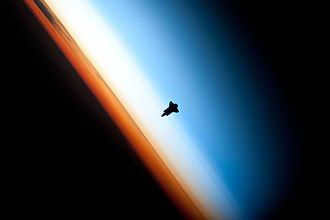
The Space Shuttle endeavor can be seen in the thermosphere while orbiting. The perspective of the photo makes it seem like it is covering the stratosphere and mesosphere, which are actually located more than 250 kilometers (160 miles) below. The troposphere, depicted in orange, is followed by the whitish stratosphere and then the blue mesosphere. [27]
Among the five primary layers mentioned earlier, which are primarily determined by temperature, there are several secondary layers that may vary in other characteristics:
- The stratosphere contains the ozone layer. Within this layer, ozone concentrations range from 2 to 8 parts per million, significantly higher than in the lower atmosphere but still relatively low compared to the predominant components of the atmosphere. The ozone layer is primarily situated in the lower stratosphere, approximately 15-35 km (9.3-21.7 mi; 49,000-115,000 ft) above the Earth’s surface, although its thickness varies depending on the season and geographic location. Roughly 90% of the ozone in Earth’s atmosphere is located in the stratosphere.
- The ionosphere, which is ionized by solar radiation, plays a crucial role in the formation of the stunning natural phenomenon known as the aurora borealis. This region of the atmosphere, extending from 50 to 1,000 km (31 to 621 miles, 160,000 to 3,280000 feet) during daylight hours, encompasses the mesosphere, thermosphere, and portions of the exosphere. However, the mesosphere experiences a cessation of ionization at night, resulting in the aurorae being predominantly observed in the thermosphere and lower exosphere. Serving as the inner boundary of the magnetosphere, the ionosphere’s influence on the propagation of radio waves on Earth holds significant practical implications.
- The homosphere and heterosphere are determined by the degree of mixing of atmospheric gases. The homosphere includes the troposphere, stratosphere, mesosphere, and lower part of the thermosphere, where the composition of the atmosphere is not influenced by molecular weight due to turbulence-induced mixing. [28] This layer, which is relatively uniform, extends up to the turbopause located at approximately 100 km (62 mi; 330,000 ft), marking the boundary of space according to the FAI. This places it approximately 20 km (12 mi; 66,000 ft) above the mesopause.
- The portion of the troposphere closest to the Earth’s surface, known as the planetary boundary layer, is directly affected by it. This is primarily through the process of turbulent diffusion. During the day, the planetary boundary layer is typically well-mixed, while at night it becomes stratified with limited mixing. The depth of the planetary boundary layer can vary, ranging from approximately 100 m (330 ft) on calm, clear nights to 3,000 m (9,800 ft) or more in arid regions during midday.
The average temperature of the Earth’s surface is approximately 14 °C (57 °F; 287 K) [29] or 15 °C (59 °F, 288 K) [30], depending on the source of reference [31] [32] [33].
The atmosphere, which is the gas envelope surrounding our planet Earth, is composed of five primary layers. These layers begin at the surface of the planet, either at sea level or sometimes below, and extend upward into outer space in a specific order:
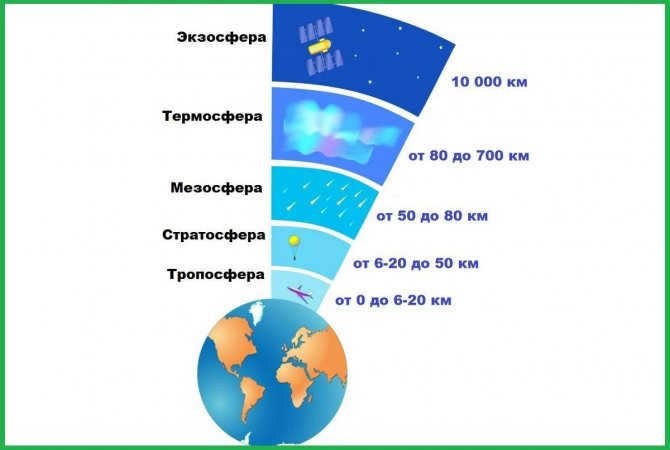
Here is a visual representation of the primary layers forming Earth’s atmosphere.
Between these layers, there are transitional regions known as “pauses” where variations in temperature, composition, and air density take place. In total, the Earth’s atmosphere consists of nine layers, including these pauses.
The troposphere: the atmospheric region where weather occurs
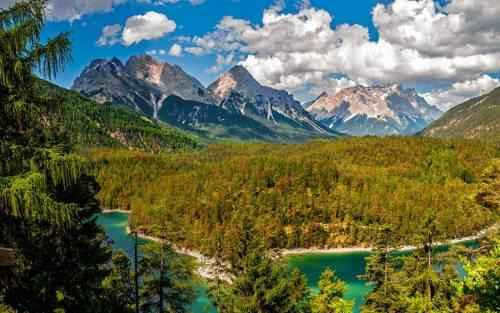
The layer of the atmosphere that we are most familiar with is called the troposphere. It is the layer closest to the surface of the Earth and extends upward for several kilometers. The troposphere is where our everyday weather occurs and is aptly named, as the word troposphere means “change of balloon”.
The tropopause, positioned at the highest point, acts as a protective barrier separating the troposphere and the stratosphere.
What is the ideal altitude for an airplane?
Contrary to the need for speed in an airplane, the altitude at which it flies should be carefully considered. The optimal altitude varies depending on the type of aircraft. It would be unreasonable to compare the altitudes at which different types of planes, such as sport, passenger, or multi-purpose combat planes, fly. However, there are still records to be broken in this area as well.

The initial recorded flight height was merely three meters. This was the height that the Wright Flyer aircraft, constructed by brothers Wilbur and Orville Wright, initially achieved on December 17, 1903. 74 years down the line, on August 31, 1977, Soviet test pilot Alexander Fedotov established a new world altitude record of 37650 meters while piloting a MiG-25 fighter jet. This record still stands today as the highest flight altitude ever reached by a fighter jet.

The next layer of the Earth’s atmosphere is called the stratosphere, which spans from 6-20 kilometers to 50 kilometers above the planet’s surface. This particular layer is where most commercial airliners and balloons travel.
In the stratosphere, the air doesn’t move vertically but instead flows parallel to the surface in high-speed air currents. As you go higher, the temperature increases due to the presence of natural ozone (O3), which is created by the interaction of solar radiation and oxygen. This ozone layer has the ability to absorb the sun’s harmful ultraviolet rays. In meteorology, any increase in temperature with altitude is referred to as an “inversion”.
Due to the temperature gradient, convection is not common in the stratosphere, which has warmer temperatures at the bottom and cooler temperatures at the top. Interestingly, this layer acts as a “cap” for convection, preventing storm clouds from penetrating through it. In fact, from the stratosphere, you can observe storms raging in the troposphere without being affected by them.
After the stratosphere, there is another layer known as the stratopause, which serves as a buffer between the stratosphere and the next atmospheric region.
What is the altitude at which passenger airplanes fly?
The majority of modern aviation consists of civilian airplanes. In 2015, there were 21.6 thousand multi-seat aircraft worldwide, with 7.4 thousand of them being large wide-body passenger airliners. When determining the most suitable flight altitude (also known as echelon), the dispatcher or crew commander takes the following factors into consideration. Higher altitudes have thinner air, making it easier for airplanes to fly. However, at extremely high altitudes, such as in the stratosphere, airplane wings lack the necessary support and the aircraft can stall, causing the engines to fail.
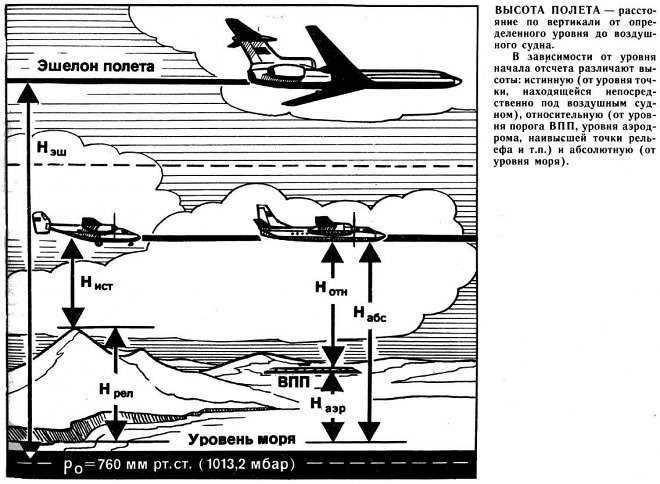
It is clear from the evidence that the pilot (or in modern times, the onboard computer) selects the perfect balance between the force of friction and the force of lift. Consequently, each type of commercial aircraft (accounting for factors such as weather conditions, technical specifications, flight duration, and direction) has its own ideal altitude.
Typically, civil aircraft fly at altitudes ranging from 10,000 to 12,000 meters when traveling westward, and from 9,000 to 11,000 meters when traveling eastward. Passenger planes have a maximum altitude of 12,000 meters, as going higher than this can cause the engines to struggle due to a lack of oxygen. As a result, an altitude of 10,000 meters is considered the most ideal.
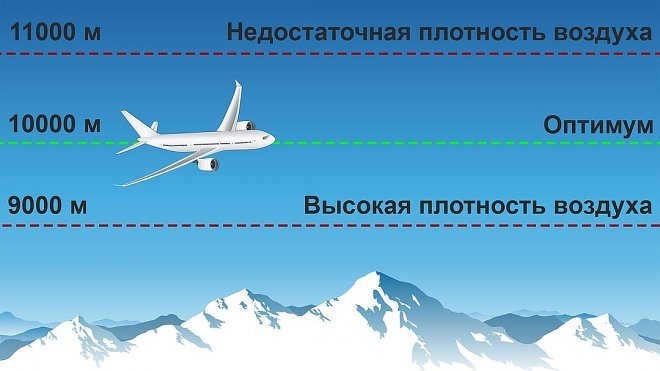
The maximum distance covered by a private jet
The Bombardier Global 7500 is the private jet that can cover the longest distance without the need for refueling. With a maximum range of 7,700 nautical miles, it surpasses any other private jet in terms of distance travelled.
Also, check out: The most perilous airports in the world or seatbelt is a mustAttentionWebinarsATOR 24 PollArchive

When it comes to flying long distances without stopping, the Global 7,500 is a top choice. For instance, it can take you from New York to Bangkok without a layover.
One of the most impressive features of this $73 million aircraft is its interior. It is designed to be luxurious and comfortable, meeting the expectations of its high price tag.
Notably, there are several other private jets available that can cover remarkable distances while offering equally stunning interiors.

What is the maximum range of private jets?
The provided chart showcases the diverse range capabilities of various private jets.
While certain models can cover distances of less than 1,500 nautical miles, others have the capability to travel up to 8,000 nautical miles.
Therefore, it is important to consider multiple factors, such as passenger load, weight, and weather conditions, when determining the maximum range of a private aircraft.

Furthermore, as the amount of fuel increases, so does the weight of the aircraft. This means that when taking off from a shorter runway, the aircraft will need to carry less weight. As a result, the overall distance the airplane can fly will be reduced.
Nevertheless, the map depicted above displays the range of various types of airplanes. This includes turboprops, Chapter State Aviation, single-engine jet aircraft, and private jets with three engines. All the range figures provided are official manufacturer measurements. Consequently, this map showcases the absolute maximum range achievable on a nonstop flight.
What Happens to Temperature as Altitude Increases? Let Me Clarify…
“At an altitude of 10,000 meters, the temperature is -50 °C,” announced the pilot over the loudspeaker – a familiar phrase for anyone who has traveled by plane. It’s intriguing how the temperature can drastically change from the warm airfield just 20 minutes ago to this icy coldness. We may be surprised, but we are aware of the fact that temperature drops as we ascend. Meteorologists have even calculated that, on average, the temperature decreases by 6.5 °C per kilometer of altitude. The explanation is quite simple: although the sun’s rays have minimal heating effect on the air, the majority of heat comes from the Earth’s surface. However, there are exceptions to this rule.
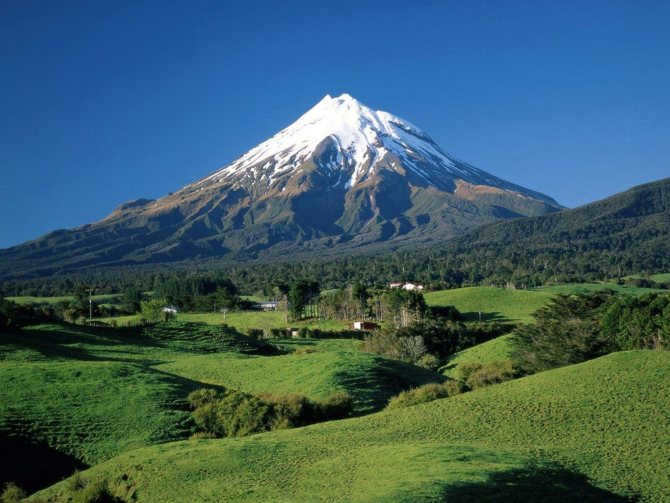
In the first place, it must be acknowledged that the temperature decreases as you go higher, but this only happens in the lower part of the atmosphere, known as the troposphere. Above, approximately up to a height of 25 km, the temperature remains consistently at around -55 ° C.
Also, check out: Experiencing a Flight on a MIG-29 Fighter Jet in the Stratosphere. Giving a MIG-29 Flight as a Gift!
It may seem peculiar when we consider that in certain locations it can be even colder near the Earth’s surface. For instance, in the village of Oymyakon in Yakutsk, the temperature has dropped to -68 °С, and at the Vostok polar station in Antarctica, it reached as low as -89 °С.
The phenomenon known as temperature inversion occurs when the temperature actually increases with altitude, instead of decreasing as expected. This can happen during clear, windless nights, when the Earth’s surface radiates heat and cools down, causing the layer of air closest to the surface to also cool. Typically, the inversion dissipates during the day, but in winter months in temperate and polar regions, the cold air near the surface may not have enough time to warm up, resulting in the inversion persisting for several days.
For further reading, check out: A deliberate magnetic shield
In the mountain basins of Eastern Siberia, there are very strong and stable inversions that can last for months. During this time, the weather is cloudless and calm, resulting in temperatures in the basin being 15-20 °C lower than just a few hundred meters up the slope. However, the most powerful inversions occur above the Antarctic ice sheet during the polar night. During this time, the air above the snow cover is constantly cooled for almost six months. An observation at the polar station “Vostok” revealed that at the snow level, the thermometer dropped to -70 °C, while just 350 m above, the temperature was -37 °C.
Check out this article: Mysterious occurrence discovered in the depths of the Pacific Ocean
Nevertheless, the fundamental principle remains unchanged: the higher the altitude, the colder the surrounding temperature. In this regard, it can be inferred that when ascending mountains, the climate undergoes a transition similar to moving towards the poles (in our hemisphere, specifically towards the north). However, if we were to truly journey from the equator to the pole, the climate would gradually become more seasonal, with a greater disparity between summer and winter as we move further north. In the mountains, while the temperature decreases with elevation, the temperature fluctuations appear to mirror those at the mountain’s base. For instance, in the Equatorial Andes at an elevation of 2.5-3 km, the temperature remains around +13-+15 ° C throughout the year, comparable to the weather in Moscow in the latter half of May. It may seem somewhat monotonous to live without experiencing winter or summer, but one must admit that such a climate is preferable to perpetual temperatures of +26…+28 °С at ground level. (Undoubtedly, such weather is ideal for the beach, but one must also attend school!) Perhaps, this is why the capitals of Colombia and Ecuador – the countries where the Equatorial Andes are situated – lie within the “eternal spring” belt.
What about the conditions on other planets? If an astronaut decides to go mountaineering on another planet, they will observe a similar pattern – the higher they go up the mountains, the colder it becomes. For instance, on Mars, the temperature decreases by an average of 2.5 °C for every kilometer of altitude, which is not as drastic as what we experience on Earth. This can be attributed to the Martian atmosphere being less transparent and always filled with a significant amount of dust, allowing the solar heat to better warm the gas shell of Mars. However, if one were to attempt to conquer the highest mountain on Mars, Olympus, they would need to insulate themselves due to its towering height of 26 km. This means that the temperature at the summit would be 65 °C colder than at the base.
The temperature becomes cooler as you move higher and on Venus. While the surface of Venus is scorching hot at around +470 ° C, at an altitude of 50-55 km, the temperature drops to a more comfortable +20 ° C. Interestingly, the atmospheric pressure at this altitude is similar to that on Earth. Perhaps in the future, it will be possible to establish cities suspended on massive airships there? However, there is a small issue: Venus’ atmosphere consists mainly of carbon dioxide, and it can rain there, but instead of water, concentrated sulfuric acid pours out of the clouds.
- What is the process of rain formation?
- The origins of rain lie in the waters of the Southern Ocean
- Is it a crater or a sinkhole?
- When will the Sun experience its explosive end?
- The phenomenon of infrared radiation.
- That is our intended destination.
- The relationship between radiation and astronautics
- The impact of the greenhouse effect on climate.
- Is the planet’s climate in trouble due to the extreme summer of 2022?
What is the flying altitude of fighter jets?
Fighter jets have varying altitude requirements based on their specific objectives. They are designed to operate at different altitudes depending on the nature of their missions. Thanks to advanced technology, modern fighter jets are capable of operating at altitudes ranging from a few tens of meters to tens of kilometers.


